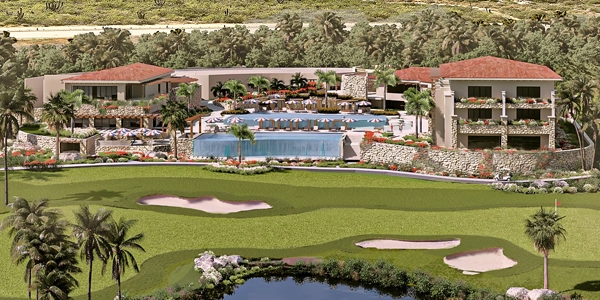By Travelin’ Joe Passov
Twenty-two years ago, almost to the week, Tiger Woods ventured to Japan for the first time. The occasion was the Tiger Woods Invitational, a Nike promotion that also featured Mark O’Meara, Nick Price and Shigeki Maruyama. The three days included a pro-am with baseball stars Hideo Nomo and Mike Piazza, a Skins Game on Day 2 and a match with junior golfers from Asian countries on the final day. Tiger arrived as the hottest athlete on the planet—he was the youngest Masters champion in history that year—and his Asian ancestry elevated him to the highest plateau possible here in Tokyo. His reception reminded me of what the Beatles must have felt when they landed in New York.
It was my first trip to Japan as well. I was a guest of Nike, and my eyes were wide open, my grin never-ending as I soaked it up. There was Tiger at the opening press conference at Fuji TV’s massive modern studios, answering questions with all of his boyish charm.
Have you tried any Japanese food yet? “No, I haven’t,” said Tiger. “Y’all got any cheeseburgers here?”
Tiger delighted at every turn. Except at the final sing-along. After the event, we gathered in Tiger’s hotel room at the Hotel Nikko. A grand piano graced the suite and staff hauled up a karaoke machine. Beverages flowed and I knocked out a capable rendition of Led Zeppelin’s “Rock and Roll” alongside three-time major champion Nick Price. All good, and everybody was there—except Tiger, who was on his way to another airport, another plane, another event.
Tiger is back in Tokyo this week for the first time since 2006. He battled Rory McIlroy, Jason Day and Hideki Matsuyama in a Skins Game October 21, then will play in the inaugural Zozo Championship, the first PGA Tour event ever to be contested in Japan. At the MGM Resorts The Challenge: Japan Skins Game, Tiger snared the early lead, winning $20,000 with a sand save-par at the par-3 fifth hole, and $40,000 at the par-4 eighth, with a rock-solid birdie putt from just under 10 feet. At the end of a cool autumn day at Chiba’s Accordia Golf Narashino Country Club, however, it was Jason Day who grabbed overall honors, with Tiger and Rory tied for second.
More golf history will be made next summer, when the Olympic Games take place in Japan. Kasumigaseki in suburban Tokyo will host. Combine Japan’s rich golf heritage, past and present, its bevy of outstanding, world-ranked courses and its cultural appeal, and it becomes abundantly clear: If you’re a passionate golfer and a seasoned traveler, you owe yourself a trip to Japan.
Golf Culture
Japan’s first golf course arrived in 1901, the Kobe Golf Club on Mt. Rokko, courtesy of a Brit in the tea trade, Arthur Croom, who longed for a sip of the game he enjoyed back home. A genuine golf boom sounded in the late 1920s, when clubs sprouted around Tokyo and elsewhere in the country. The very best courses benefitted from the design genius of British architect Charles Hugh Alison, a partner of H.S. Colt and briefly, with Alister MacKenzie. Recessions and wartime eventually cooled the expansion, but in 1957, golf enjoyed another explosion. An event then known as the Canada Cup (it became the World Cup in 1967) set Japan ablaze with golf fever.
The World Cup is a men’s tournament contested by teams of two players representing their country. Many different countries played host to the event in the early days, from Canada to the United States, along with England, Australia, Mexico, Argentina and France in the first 12 years. Most famous, however, was the 1957 Canada Cup at Kasumigaseki in Tokyo. It was there, over the club’s East course that the Japanese players Torakichi “Pete” Nakamura and Koichi Ono upset the heavily favored United States team of Sam Snead and Jimmy Demaret. Nakamura, the individual champion and Ono became national heroes. Nearly 12,000 spectators attended, a huge golf gallery at the time. Golf soon became wildly popular in Japan and 10 years later, its appeal spread to Korea. Eventually, most of Asia fell under the golf spell that started in Japan.
For many years, top clubs in Japan employed a unique, two-green system for each hole, one for winter play, the other for summer use. Many have now abandoned this concept, as the development of superior grasses has allowed for single greens to proliferate, though the host club for this week’s professional tournaments retains the old method. Still in place are the long lunches after nine holes and the hot baths, so much a part of proper club life in Japan. Another tradition alive and well is the women caddies, who tote umbrellas to shield themselves from the sun and who lug your clubs in a trolley (pull-cart). It’s all part of the Japanese golf culture. I’ve made three trips to Japan since that first one. Here’s my take.
Where to Play
Hirono Golf Club
Situated near Kobe, less than an hour’s drive west from Osaka, Hirono has long been ranked as Japan’s top course and among the Top 50 in the world. Designed by C.H. Alison, the course unfolds over spectacular rolling terrain with deep, strategically placed bunkers, known as “Alisons.” Jack Nicklaus reached the 565-yard, dogleg left par-5 15th in two during a 1963 exhibition, a feat never before accomplished and seldom since. Expect its ranking to improve, following a significant and superb restoration by the English firm of Mackenzie and Ebert, who most recently reworked Royal Portrush and Turnberry’s Ailsa to tremendous acclaim.
Kawana Hotel (Fuji)
Seventy-five miles south of Tokyo’s Haneda International Airport is Japan’s most famous golf resort, Kawana, in Ito. Designed by C.H. Alison in 1930 and built in 1936, Kawana’s Fuji course is the country’s answer to Pebble Beach, with holes draped atop a rocky ledge high above the Pacific Ocean. The 11th hole, with a lighthouse in the backdrop and the holes that take in a view of majestic Mt. Fuji will linger long in memory.
Kasumigaseki Country Club (East)
Both the East and West courses at Kasumigaseki are superior tests of golf and each has hosted significant tournaments. If you’re faced with a choice, go with the East. This flattish, easy-to-walk 1929 creation was stiffened with C.H. Alison’s bunker work in 1930 and was modernized in 2016 by Tom Fazio and his son Logan, who also lengthened it to 7,466 yards, from 6,970. The short par-3 10th over water to a green framed by Black pines is most memorable.
Tokyo Golf Club
Located right across the street from Kasumigaseki, an hour’s drive west of downtown Tokyo, Tokyo Golf Club is the city’s most prestigious golf ground and a longtime member of the Top 100 courses in the world. Since it was founded in 1914, it has moved twice, most recently to its current location in 1940. It tried then to recreate the features of its 1932 C.H. Alison design, but not until a recent re-do by architect Gil Hanse does it feel like a real classic again.
Naruo Golf Club
Another Golden Age design from 1930 with Alison influence, Naruo isn’t a long course, but emphasizes precise shotmaking because most of its greens are small, elevated and protected by very deep bunkers. It also enjoyed a healthy run as one of the top 100 courses in the world, with its classic layout that features many elevated tee shots hit down into valleys, then back up to tough-to-hold greens. It’s located not far from Hirono, on the way north to Kyoto.
Why You Need to Go
It isn’t Scotland, Pebble Beach or Pinehurst, but Japan has a long, proud, golf-rich culture all its own. To celebrate your own passion for golf culture and your love of travel, plus all of the country’s remarkable attractions, put Tokyo and Japan on your bucket list.
Getting Around
Yes, the language barrier remains formidable, with not much conversational English (or Spanish) to be heard, but navigating your way around isn’t too tough. Tokyo’s crowds and chaos resembles New York City, but the taxis, subways and trains are efficient. If traveling by taxi, have your hotel concierge write down the necessary points and locations in Japanese to give to your driver. Avoid buses if you’re new to the area. Trains, Bullet trains and planes will get you easily from Tokyo to the outlying areas, though again, it’s best to hire a guide or a tour operator to assist with language and arrangements.
Course access is challenging, with all of Japan’s top five courses being strictly private—except for the resort component at Kawana. However, given your status as a member at Diamante, you’ve likely negotiated this terrain before. If you haven’t, let us know—we’ll assist with an introduction. Sayonara—and enjoy!







